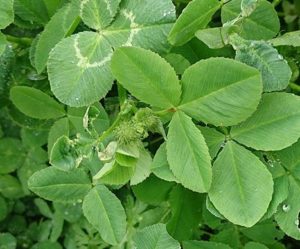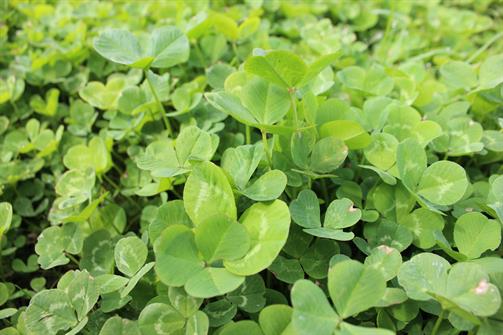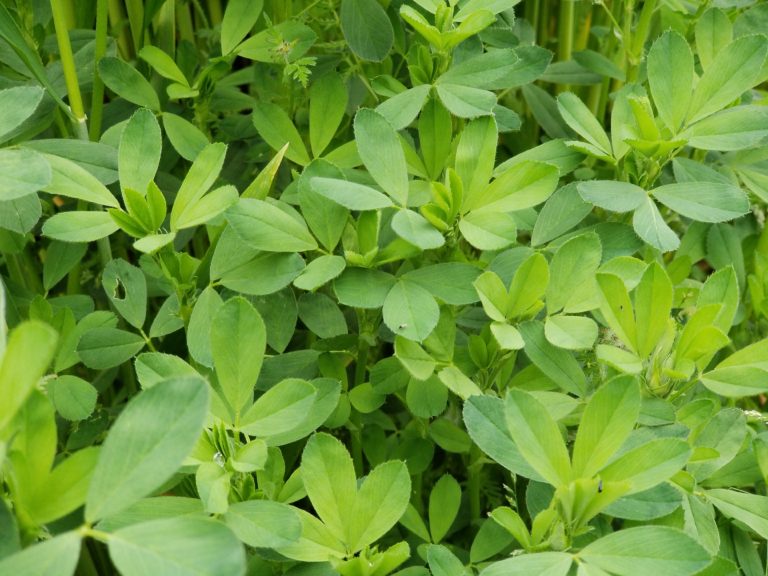Recovering from Winterkill
Many of you are looking at hay fields or pastures and are seeing significant winterkill. For the past few days, my phone has been ringing off the hook from farmers and ranchers looking for cost-effective ideas to overcome this latest hurdle that Mother Nature has thrown at us.
Alfalfa Options–
#1 Rotate Fields – The first thing that you may consider if you have alfalfa and grazing pasture is to plant a permanent pasture where the alfalfa was with the idea of planting alfalfa later where your older pasture field is now. This would be a good option as it allows you to avoid the auto-toxicity in alfalfa that prevents it from being seeded back immediately to alfalfa. Improved orchardgrass varieties such as Crown Royale and Quickdraw or a Tall Fescue like Rustler, can be the basis for a highly productive, new pasture that can last for years. If a short-term pasture is more your speed, consider utilizing a good tetraploid perennial ryegrass like Oro Verde or Albion. The further north you are, the later maturity the grasses should be in your mix to match up the plant’s vegetative growth stage with your climate.
#2 Thicken up the Alfalfa Stand – If you have a weak stand yet need high-quality hay like the type alfalfa can deliver, consider thickening it up with a multi-cut Berseem Clover, like our variety Frosty. Cheap berseem clovers from overseas are likely to be a single-cut variety and should be avoided. Berseem clover is similar in appearance and quality to alfalfa and will retain its green color in the bale. There have been anecdotal reports in the United States and studies conducted in the Middle East with Buffalo that suggest that Berseem Clover in the ration can improve Butterfat percentages.
You can also utilize Italian Ryegrass (biennial types), Tetraploid Intermediate Ryegrass, Festuloliums, Teff, or small grains to help fill in a field. The downside is that mixed hay brings a lower price to that of all legume hay.
If you irrigate your hayfield you will need to decrease the amount of water that you apply at a single time and speed up the frequency for optimum success. Remember that annual grasses and clovers have shorter root systems.
Raise Your Cutting Height
You will need to raise your cutting height to 3-4 inches as the ability to re-grow lies in the base of annual plants and not the roots like alfalfa. Assess your field before cutting to identify the lowest green leaf on the plants. If you fail to leave any green leaves you will not see any regrowth!
Base your cutting time on when the earliest component in your field is ready. For annual clovers, you will want to cut at or before the bud stage, before blooms are showing. For grasses or small grains cut at or before the boot stage. If you wait until head emergence in grasses or grains or bloom in clovers, then you will see poor recovery as the plants will have shifted from vegetative to reproductive modes.

Proper Seeding Depth is Key
Get good seed-to-soil contact when seeding, taking care not to plant too deep. Your best option is always to drill the seed. Small seeded clovers and Teff should be sown at approximately ¼ inch deep. When sowing, stop the drill after having traveled only a few feet. If you don’t see some seed, then it is likely that you have your drill set too deep and you need to raise it a bit. If you need to broadcast, try to time it with a long period of wet weather and increase your seeding rate. If you can scuff the ground by lightly discing or with a harrow, your odds of success will improve. Make sure not to over-work it, you do not want a fluffy seed bed. You should be able to bounce a ball on the field, this will indicate a firm enough seedbed for planting. If the seedbed is too loose, then run across it with a roller to pack it down a bit.
In the Fall, you can work up your ground and plant back to alfalfa, and the effect of auto-toxicity should be reduced or eliminated.
Pasture Options–
If your pasture is weak, then it may be time to work it up; however, sometimes you can easily renovate it. The first step is to assess your stand (See “ Renovating Pastures with Clovers”). If you have a lot of unproductive grasses then it is probably time to start over. If there are a lot of broadleaf weeds, then you can apply a broadleaf herbicide and then drill some improved forage grasses into it to thicken the stand. Spring is an excellent time for seeding Orchardgrass or Tall Fescue. Medium-Late maturity Crown Royale Orchardgrass will provide a lot of flexibility for future use, being suitable for either grazing or hay applications.
Some brassicas are also very good for improving the productivity of the soil as they can produce forage throughout the summer. A couple of pounds per acre can go a long way when it comes to Brassicas so make sure not to apply too much seed.
If you need more perennial clover in your pasture, consider utilizing AberLasting Clover. AberLasting is an amazing breakthrough in clover as it combines the establishment speed of a white clover with the resiliency of a Kura clover. Scientists at the Institute of Biological, Environmental, and Rural Sciences in Aberystwyth, Wales were able to successfully cross White Clover with Kura Clover. The resulting variety, AberLasting, features both rhizomes and stolons and as a result, is much more hardy than white clover. Unlike Kura Clover, AberLasting will be productive from a forage standpoint in the year of seeding.

AberLasting White x Kura Clover
Other Options-
If nature has left you a blank slate and you need summer feed, there are options.
Frosty Berseem Clover can produce multiple cuttings over the summer. In trials at Penn State, Spring planted Frosty yielded over 4 tons/A. of hay. Unlike most clovers, Berseem is non-bloating and is safe to graze with minimal risk.
Small Grains (oats, triticale, barley) with Peas can provide 2.5 to 3.5 tons/A. in late June to mid-July. Consider using an improved pea, such as Survivor, to get maximum productivity. This mix will deliver a highly productive forage that is especially well-suited for balage or silage.
Sorghum-Sudan, Pearl Millet, and Teff are warm-season annual grasses that can produce impressive amounts of forage. Make sure you wait to seed until all danger of frost has passed as these species are frost sensitive. These species will not overwinter and Sorghum-Sudan is not recommended for stock-pile grazing or harvesting if it has seen a frost or after it matures as there is the danger of prussic acid poisoning.
For a printable, PDF version of this blog, click below.

